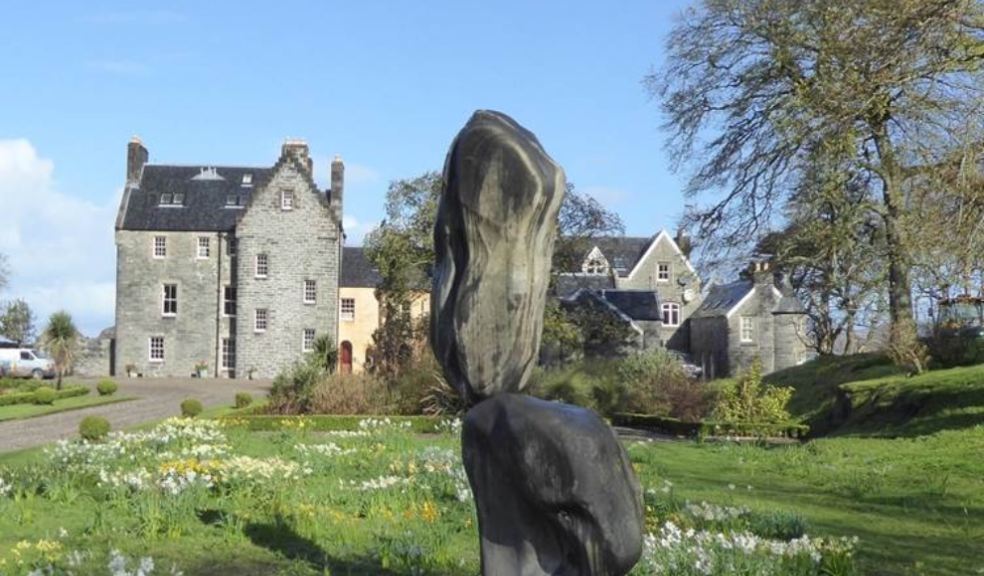
Using sculpture to ‘make an entrance
Stonebalancing artist Adrian Gray shares some clever ideas to make the first glimpse of your home incredible
There is often thought, time, expense and effort spent on the appearance and style of our main garden spaces, but sometimes the first perception of a property, its entrance, can be neglected. Adrian Gray, the international pioneer of stonebalancing art, is often commissioned to create sculptures for the purpose of upgrading, and enhancing, residential entrances. Here he shares some inspiration to incorporate sculptures into the driveway or front garden of your home
1. Fanning the flames of anticipation – driveway ideas
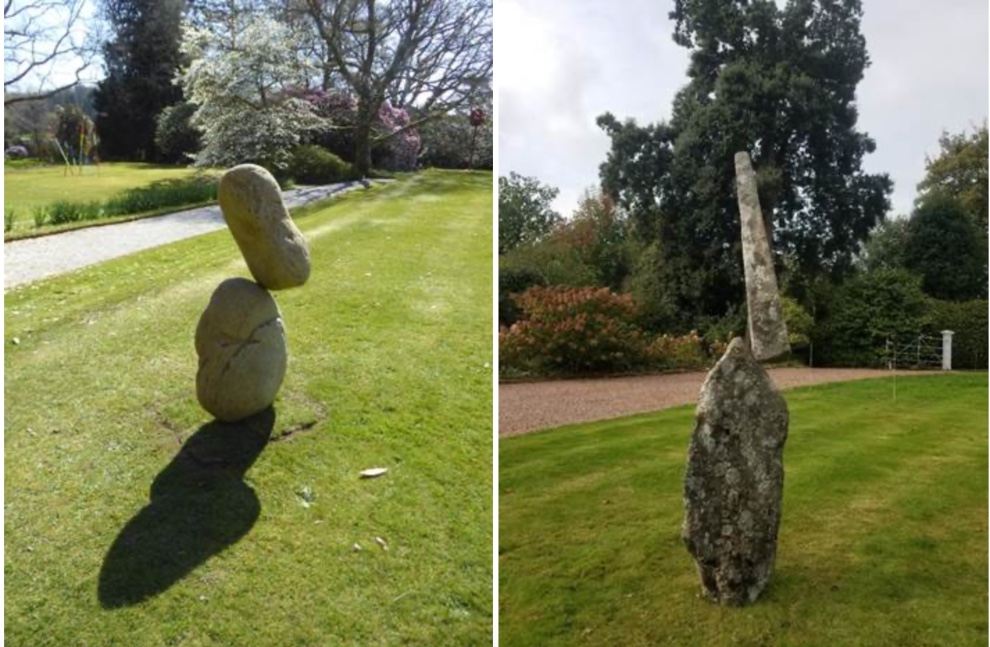
(left to right) Adrian Gray’s Greensand stone sculpture in Devon and ‘Straight up Joy’ in Cornish granite
“Placing an impactful and mesmerising sculpture in the lead-up to your home can build a powerful sense of expectation and excitement around the residence to come. A long, straight driveway might lend itself to two sculptures sharing a theme, providing a more natural and interesting symmetry to the obviousness of gatepost-style installations. If a driveway is curved, and the architectural style of the house is more angular, a sculpture can incorporate these two elements, becoming a beautiful reflection of that complimentary aesthetic. Sometimes the simplest comparisons work the best.
“You could also try having sculptures set back from the drive itself, hence leading the eye into the grounds and accentuating the depth and scale of the wider garden.
“Look for sculptures that inspire depth of interest or emotion. The initial sight of a puzzling stonebalancing sculpture in a driveway can inspire expectation and encourage the visitor to be curious about what is to come. The paradox of these heavy, sculptural, dense shapes balancing in a fragile, delicate and seemingly improbable way instils a sense of wonder and what better and exciting way to welcome your visitors and yourself, to your own magical world.”
2. Make a statement with a monumental sculpture
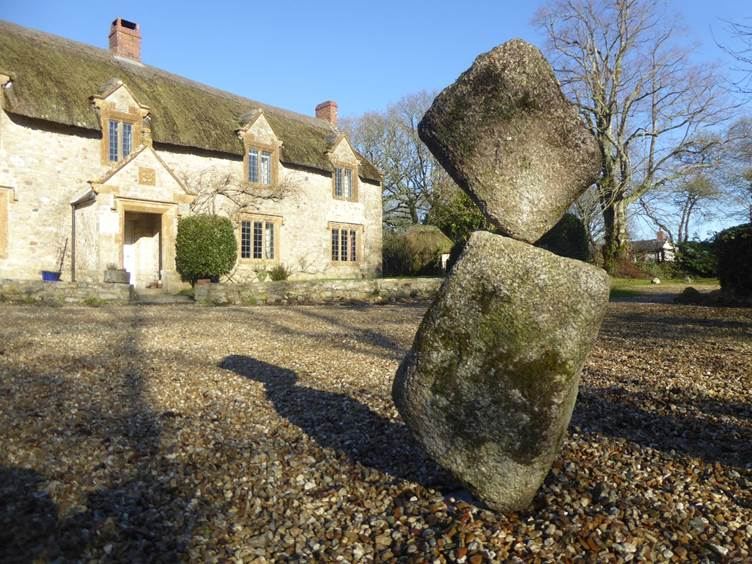
Adrian Gray’s 'And two makes one' in granite
“If you are lucky enough to have the room and the budget for a monumental sculpture, then you can expect a high visual impact. It will probably be the first thing your visitor mentions and a topic for fascinating and prolonged conversation - if you have done your homework! These don’t necessarily require a huge front garden or driveway. Some smaller spaces can, with the right monolithic piece, be made spectacular. The juxtaposition of an overwhelming artwork, bossing a small space can be intoxicating, but beware, everything else around the sculpture may never be noticed again!
“A very effective way to maximise the narrative of a stonebalancing sculpture, especially if it is on a grand scale, is to place an odd number of similar smaller boulders near the main piece - as if they have somehow fallen off and now lay scattered about. This also promotes the playful idea that the main stones are waiting to topple, giving a sense of trepidation and jeopardy in contrast to the natural calming ambience of the balanced sculpture.”
3. The power of considered siting

Adrian Gray’s Ammonite fossil sculpture, enjoying this Devon view
“A sculpture alone on a lawn is emphasised by the blank canvas around it. As an artist I love this type of siting, as the sculpture can be admired in all its glory without distraction or encumbrance. An unconventional shaped front lawn can also be quirky and interesting, and a prudently sited sculpture becomes a feature, with the surrounding unusual landscaping framing and highlighting the piece.
“Always be aware of the importance of the seasons when deciding where to place your sculpture. In mid-summer a large tree will cast it’s shadow close by, but as the days draw in and the sun positions itself lower in the sky, those shadows lengthen and you do not want your new lovely sculpture half in the dark. Also, what seems a perfect spot in the spring might not work so well when the trees and shrubs have no leaves. Also bear in mind that a sculpture is to enhance a vista, not inhibit it, so placing it to one side in a grand panorama will add interest and not disrupt the view.”
4. Use detail to elevate your sculpture
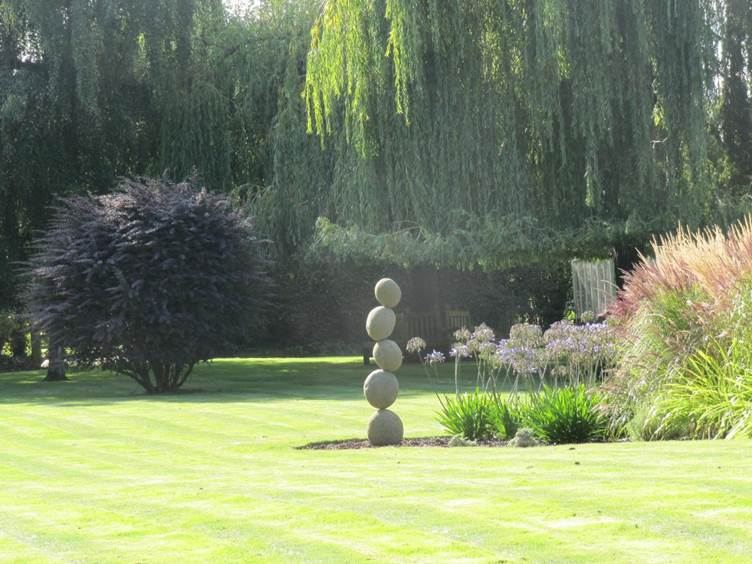
Adrian Gray’s ‘Worlds of possibility’
“A lot of entrances can be uninviting, or even gloomy at night. A cleverly illuminated sculpture can add warmth and distraction, and in conjunction with an intelligently-lit property, will undoubtedly send a message of elegance, style, sophistication and class. It does all these things, but for me, done properly it is just really cool.
“Along with using light, a clever trick to divert the eye or beguile the visitor is to site a visually arresting or mesmerising sculpture in a way that it is viewed between two objects when passing. These may be trees, shrubs, man-made objects, or a combination of any of these. These elements will become both a frame and an unobtrusive guide, leading the eye to the puzzle beyond.”
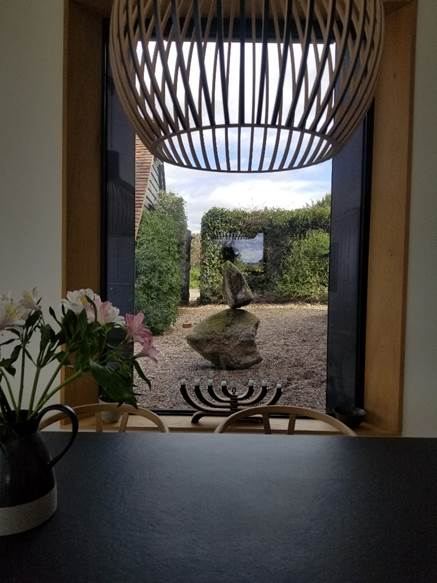
5. Make the most of the view
“Rooms often look onto driveways or front gardens, and so consider how you can enjoy your sculpture from as many angles as possible. It may serve as a dramatic entrance when approaching the house, but it can also double-up as a beautiful, calming piece of art to enjoy once you’re at home. If the sculpture can be viewed from a picture window, positioning it centrally will provide a pleasing aspect.
“Sculpture is very personal and our taste can be innate or acquired over time, and through experience. Our choice of site for a sculpture can also be peculiarly individual or curated. What is important is the pleasure you get every time you see it.”
Adrian Gray’s ‘As light as granite!’
The pioneer of stonebalancing art, Adrian Gray (based in Devon, near Axminster) has spent the last 23 years of his life exploring the fine art of balance in any and all types of rock. His work has evolved to include new ideas and themes, but the predominant feature remains the beauty and seemingly impossible nature of balance – a fleeting state, which to see captured so physically is both moving and hope-inducing. Using carefully selected weathered stones he creates balanced sculptures that range in size from desktop balances to monumental 6m installations which have been sited in public and private spaces across the world.
Adrian has a growing celebrity amongst the artworld, media and with leading horticultural institutions, including the RHS. Previous exibitions include Equipoise at the Art Trove gallery, the Chaumont Garden festival and one man shows in Singapore and Roccoco Garden. Adrian counts Hugh Fearnley-Whittingstall as a client and Kevin McCloud described him as ‘the stone whisperer’ after showcasing a crane-balanced piece on Channel 4’s Grand Designs. Critics have likened Adrian’s work, and the dramatic effect it has on his audience, to the power and presence of the ancient menhirs and stone circles that stud the landscape in which Adrian lives and works.
To commission a sculpture you can contact Adrian on adrian@stonebalancing.com or call 01297 35756, 07305 898546













